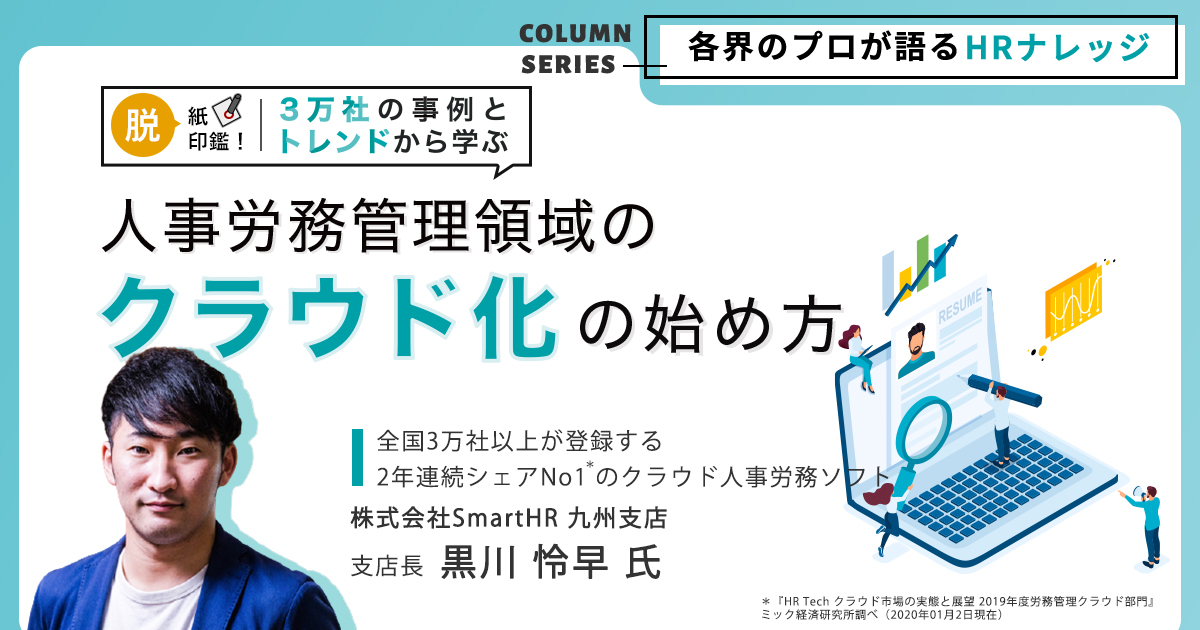Introduction ~What is HR Tech~
Recently, in the field of human resources and labor, we often hear the term HR Tech (HR Tech) along with the word DX, and it is inevitable that we will consider its use.
In this report, I would like to inform you about the current situation of HR Tech, its outline, and how it can be used.
HR Tech is a word that means "human resource× technology" in the human resource. It is a method of performing personnel-related tasks such as recruitment, development, evaluation, and placement using cutting-edge IT-related technologies such as cloud, big data analysis, and artificial intelligence (AI) (from the "Human Resources Department in Japan" website). We often utilize various services mainly provided as cloud systems, but there are various systems such as attendance management, company insurance procedures, payroll and year-end adjustment, personnel management, personnel evaluation, talent management, leader development, and recruitment management.
Overview of services in human resources and labor management and points at the time of introduction
As a cloud system in HR Tech, this is a complete overview of services in the areas of "practical operations (attendance, company insurance procedures, salaries)" and "personnel management, evaluation, and talent management".
(Please note that it is described within the scope of what I use as a company workers' office and experienced demonstrations, etc., and it is not covering all systems and services.)

Looking at the introductions to each system, it is likely to be useful to promote efficiency in the field of human resources and labor, but what should you keep in mind when implementing these systems?
I think it's mainly:
(1) Whether to introduce spot-like or overall
Even now, some companies have already introduced existing systems, mainly so-called on-pre-type systems. In such a case, it is necessary to consider whether to utilize the existing system as an auxiliary system by making use of the function of cooperation, or whether to make drastic introduction including switching from the existing system.
(2) Integration with accounting, accounting, and other systems
It is not only the area of human resources and labor that is being introduced into the system. In particular, as the term FinTech was often used before HR Tech, there is a possibility that systemization and cloudization are already progressing in the company's accounting and accounting. It is necessary to proceed with the introduction while being aware of cooperation and interlocking with these other areas.
(3) Select a system that meets the company's sense of scale/stage
Each system or feature can be the size or stage of the company that is appropriate for it. Whether it is an operation feeling suitable for the number of employees, whether it is a screen, the output function of the form that was at the company stage, the aggregation function, etc. is very important from the viewpoint of the person in charge, and if you misjudge this point, it may result in a decrease in productivity and efficiency.
Points to consider for each function
Attendance management
With regard to attendance management, cloud attendance regardless of the timed location is becoming mainstream due to the penetration of telework and remote work. In addition, alcause it has been a function for a long time, there is also a function that can identify the timed location by linking with GPS, and it can be utilized according to the company's management policy.
Recently, regulations on working hours management have become increasingly regulated under the Labor Standards Law, etc., and it is required to firmly manage the difference between the time announced and the recorded working hours, and to manage the upper limit time of the 36 agreements. Especially important in the future is the difference between the time and working hours such as PC logs and entrance and exit records. Some systems are ingying this management efficiently, so why not consider it?
Payroll
The results and accuracy of payroll calculations should be different in each system. After that, it is easy to input at the time of setting and how to input without mistakes are important from the person in charge's point of view. In addition, I think that it is better to consider the development of web details that greatly contribute to the reduction of business hours on the premise of natural implementation.
In addition, there may be a need to change the output form and set a custom calculation formula for each item according to the growth and stage of the company, so it is likely that it is necessary to consider it from such a detailed perspective.
Depending on the system, items in the wage register required under the Labor Standards Law may not be displayed, or additional charges may be charged if you try to renovate them so that they are displayed, so it is necessary to check whether the necessary items are covered.
Social insurance procedures
Large companies are already required to apply electronicly for social insurance procedures (April 2020). In the future, it is inevitable for small and medium-sized enterprises to respond to electronic applications for social insurance procedures.
Please refer to the following summary of the differences between G-Biz ID and e-Gov, which are considerations for systemization.

At last
Again, I would like to confirm the points of system introduction in the human resources and labor field. Please feel free to contact FECC if you have any questions or problems, as well as to help each company consider the introduction.
- Consider whether to introduce it spot-based or overall, including cooperation with the current system
- Be aware of the link between accounting, accounting, and other systems
- It is also important to select a system that meets the company's scale and stage!
Related article
Learning from the case and trends of 30,000 companies How to start cloudizing the human resources and labor management area
The Kyushu branch manager of SmartHR, the no.1 cloud hr and labor software registered by more than 30,000 companies nationwide for the second consecutive year, will tell you from the perspective of a service provider, such as trends and benefits of cloudization in the human resources and labor management area, case studies, and how to start, based on abundant experience and examples.
クラウド導入にあたっての労務・法務の心配ごと相談もFECCへ
FECC helps hr and management solve labor and legal questions. It is possible to consult lawyers and company workers free of charge about points to note from the legal and labor perspectives when introducing labor management tools, and legal knowledge necessary for personal information management, etc. that should be noted in labor management. Please feel free to contact us!

 Consult and make a reservation
Consult and make a reservation Add LINE Friends
Add LINE Friends 080-1001-4675
080-1001-4675




 Receive on FaceBook
Receive on FaceBook Receive on LINE
Receive on LINE
